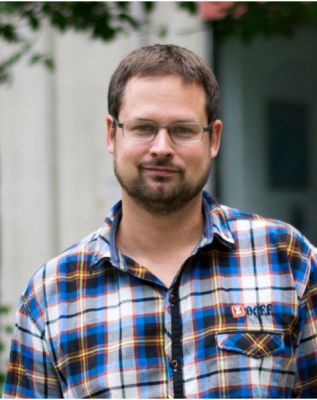Research Group Leader / Forschungsgruppenleiter
Departement für Chemie, Biochemie und Pharmazie
University of Bern, Switzerland
E-Mail: simon.grabowsky@unibe.ch
->DOWNLOAD FULL CV<-
Lecture 29: Simon Grabowsky
Quantum crystallography for chemical bonding analysis
S. Grabowsky
University of Bern, Department of Chemistry, Biochemistry and Pharmaceutical Sciences, Freiestrasse 3, 3012 Bern, Switzerland
simon.grabowsky@unibe.ch
The methods and techniques of experimental electron-density research have a long and successful history, but only recently they have been rejuvenated under the umbrella term quantum crystallography when wavefunction-based refinement techniques emerged as realistic alternatives to more established multipole and maximum-entropy methods [1,2]. In my lecture, I will only focus on such wavefunction-based techniques. They can be categorized as follows:
i) Accurate structure determination methods that utilize quantum-mechanical wavefunctions to improve the results of least-squares refinements, specifically Hirshfeld atom refinement (HAR) [3].
ii) Experimentally fitted wavefunctions for chemical bonding analysis, specifically X-ray constrained wavefunction (XCW) fitting [4].
For HAR, I will outline to which extent we can obtain more information and more accurate information, and at what speed such information can be generated with modern X-ray diffractometers and modern software. I will exemplify the gain in the obtained information contents for fundamental and ubiquitous compounds such as the YLID test crystal and biomolecular structures (e.g., drugs such as irbesartan).
For chemical bonding analysis with XCW fitting, the first question to discuss is the problem of significance and reproducibility as the information left in the structure factors after non-spherical structure refinement is barely above the noise level. Can we obtain physical effects such as electron correlation and polarization by the neighbours in the crystal field experimentally via XCW fitting?
I will finally present studies where we believe that HAR-refined structures and XCW-fitted wavefunctions contribute to a better understanding of fundamental chemical questions: hypervalency of period-3 elements and bond-order/bond-length relationships in (conjugated) olefins.
[1] Grabowsky, S., Genoni, A. & Bürgi, H.-B. (2017). Chem. Sci. 8, 4159.
[2] Grabowsky, S., Genoni, A., Thomas, S. P. & Jayatilaka, D. (2020). The advent of quantum crystallography: form and structure factors from quantum mechanics for advanced structure refinement and wavefunction fitting, in: Mingos, D. M. P. & Raithby, P. R. (Eds.), 21st Century Challenges in Chemical Crystallography II., Structure and Bonding, Springer, vol. 186, pp. 64–144.
[3] Capelli, S. C., Bürgi, H.-B., Dittrich, B., Grabowsky, S. & Jayatilaka, D. (2014). IUCrJ 1, 361.
[4] Davidson, M. L., Grabowsky, S. & Jayatilaka, D. (2022). Acta Cryst. B 78, 312.


